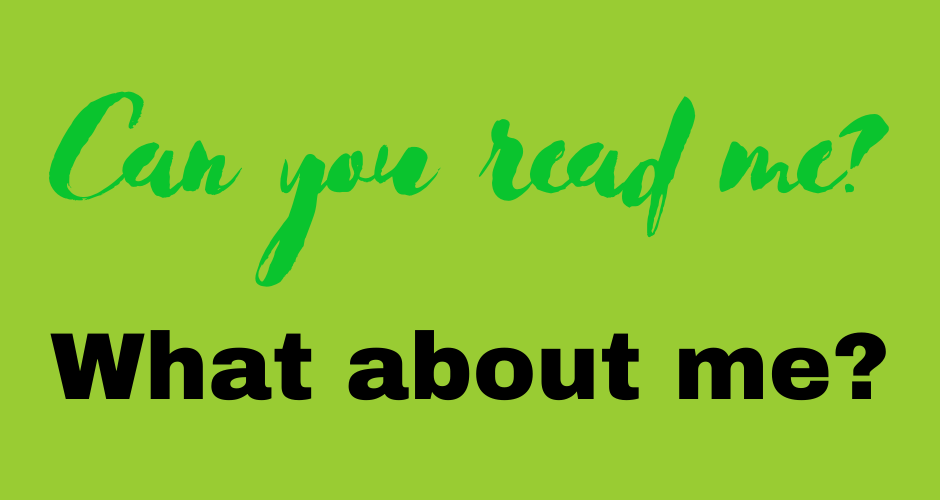Digital Signage Best Practices: Layout Design Guideline

We have already gone over why context is so important when creating your digital signage strategy and how it can affect the placement of your screens and projectors. However, the sizing and design of your digital content are equally as important.
When designing your content, ask yourself these three questions:
- What do I need to display?
- What is the key takeaway I want my customers to understand from my content?
- What’s the benchmark for this type of content?
Benchmarking is a key component to understanding your sector and it is no different when creating a digital content strategy. Consider what your competitors are doing right and put in place those best practices for your digital content.
Getting started to design content for digital signage
As you begin designing your digital signage strategy, consider the size of your screen. The standard ratio for most screens is 16:9 and using this ratio will ensure that your design is not being cut off, leading to messaging being lost.
It’s also crucial that your digital signage is created in high resolution. When you scale your signage up, you want it to be as crisp and clear as possible. And scaling content that is created in a lower resolution will lead to blur. Use 1920 by 1080 to ensure a high quality of image in all your digital signage screens.
The key factors in successful digital design are:
1. Copy and timing
Your copy is the text that appears within your design. These should be bold and snappy headlines that grab your viewers’ attention. But they should also inform them enough that they can act on the information. If your design only says “sale” but doesn’t tell your customers where to go or what is on sale, they cannot act on that information.
Once you have your attention-grabbing and informative text, you need to consider timing. The great thing about digital signage is that it allows movement and different content on the screen. However, you should be able to read your message 2-3 times slowly before removing the text from the screen. Leave it on too long and you’ll lose the viewer’s attention. Too short and they won’t be able to read your message.
When creating your design, consider:
- Clear messaging: The point you want to make should be clear for everyone. With enough detail to be understood but concise and short enough for people to read quickly from a distance.
- Limiting the number of characters per slide: Don’t overwhelm viewers with information. If you need to explain more, point them in the direction of a website. Or use a QR code they can scan on their phone to take them directly to the information they need.
- Avoiding any hyphenated word breaks: When you come to the end of a text line, drop down before you start the next word, so it doesn’t span across two lines. Hyphenated words can be hard to follow, especially when you have moving images.
- Using short URLs: Long URLs can look messy and are also harder for people to write down in time. Use a URL shortener to create clean links that can be copied down by your audience quickly.
- Don’t rely on audio: Audio is an added feature for digital signage. However, it is different from other video messaging, like television advertising. In most cases, screen audio may be hard to hear or turned off completely. That’s why it’s so important to have clear messaging on-screen as well as audio.
Remember, when creating a copy for your digital signage, the tone of voice should be the same or similar to the tone you use throughout your marketing materials, so it feels organic within your brand ecosystem.
2. Layout design
The key to a great layout is space. A crowded design looks messy and unprofessional. Having too much going on makes it harder for your audience to really take in the information you are trying to get across. You need to create something that is both eye-catching and readable.
Designers should consider “white space” or “negative space” within their designs. “The basic role of white space is to let your design breathe by reducing the amount of text and functional elements that users see at once”.
Although it’s called “white space”, it’s up to you what colors you want to use within your design. Branding is so important.
Using negative space allows you to:
- Make text more readable
- Drive your audience’s attention to a particular piece of information
- Create a visual hierarchy on a page
- Create connections between individual elements
- Convey a feeling of elegance
Also, remember the four B’s. Be Brief, Be Bold.
Start with a concept that is simple and straightforward that allows you to tell your story without crowding your layout. You can also use images as part of your design. In general, audiences are much more likely to remember messages with images or short videos as context.
As with any part of digital signage layout design, once on your screen, stand back and make sure you can read your text. If you can’t understand your design, then neither will your audience or customers.
3. Hierarchy of content
The hierarchy of content can sound daunting, but it’s really about making sure you are putting the focus on what you want to promote. Visual Hierarchy is used to rank design elements and influence in the order you want your audience to view them.
What part of your content is the top priority? For example, you have a sale on sunscreen within your store. The top priority is that you want people to know there is a sale on. Then you want them to know what is on sale. Your brand colors and logo as well as an image of someone on the beach would be next. From that, you can make decisions on sizing, color, and location based on the content hierarchy.
Remember to:
- Use scale to make important information larger
- Use color and contrast to make objects stand out
- Play with perspectives, such as making backgrounds blurred
- Use fonts and white space intentionally
- Consider balance and symmetry within the design
- Use motion effectively, not just for the sake of it
4. Viewing patterns
When your audience looks at your digital signage, they will scan it in two distinct ways, either the Z pattern or the F pattern. Patterns are a way to describe how people’s eyes follow the flow of information. For example, if they follow the Z pattern, their eyes will move like this:
The path moves top-left to top-right, then down to the lower left, and across to the lower right. This is best used for information that is not text-heavy, focusing on images and titles.
The F pattern moves from the top left to the top right, then down to the next line from left to right, and so on. This is best used for text-heavy digital signage, such as menu boards or corporate communications.
When designing digital signage content, consider the scanning behaviors and patterns the audience follows.
5. Typography/Fonts
Within the world of design, there are hundreds of thousands of fonts to choose from, so where do you start? You should consider 3 main things:
- Branding: What font do you use throughout your marketing material?
- Context: Is your message serious or fun?
- Readability: Is your font readable for people viewing your screens?
Sans Serif fonts (e.g. Helvetica, Arial, Verdana, and Open Sans) work well for smaller spaces with a clearer copy. But this will also depend on it on branding and context. Consider if people are passing by your screens or if they are in a waiting room and taking their time to read. See our last blog post for more information on the context of your digital signage.
In general, don’t use more than 1-2 fonts on a screen and keep the background and font colors contrasting enough so that the text pops and is easy to read from afar.
6. Font size
Just as important as the font style, is the font size. What font size is the best? The short answer is: “depends.” It depends on how far away the screen from the audience is. Where is the audience? Are people standing by in a waiting room? Trying to read a menu board? Or are you hoping to catch their eye as they move down a shopping aisle?
The best way to make sure the font works is to test it. As a rule of thumb, you can keep headlines to around 40 points and body copy to 24 points.
7. Color
Much like font and tone of voice, your color choice should sit within your branding, while also considering digital signage best practices and messaging.
The key to color selection is making sure you have enough contrast in images, so people have no trouble reading. It’s best to use high-contrast color combinations while avoiding super-bright combinations.
You can use tools like coolors.co to create color palettes and check color contrasts to ensure your digital signage is readable. Color must also be selected in the RGB model for accurate display on signs.

Final thoughts
Digital signage content design is subjective and will depend on your brand, messaging, screen size, and placement. However, these best practices work as guidelines for size, color, and text information. Remember that design should be image-focused, even if you are using audio, as digital signage is really meant to catch your eye, not your ears.
In all cases, once you design your content, step back and make sure you can read it easily. Test how your screens look and change the design if needed.
If you want to know more about digital signage, or anything we have covered in the blog, get in touch with our team of experts today.




